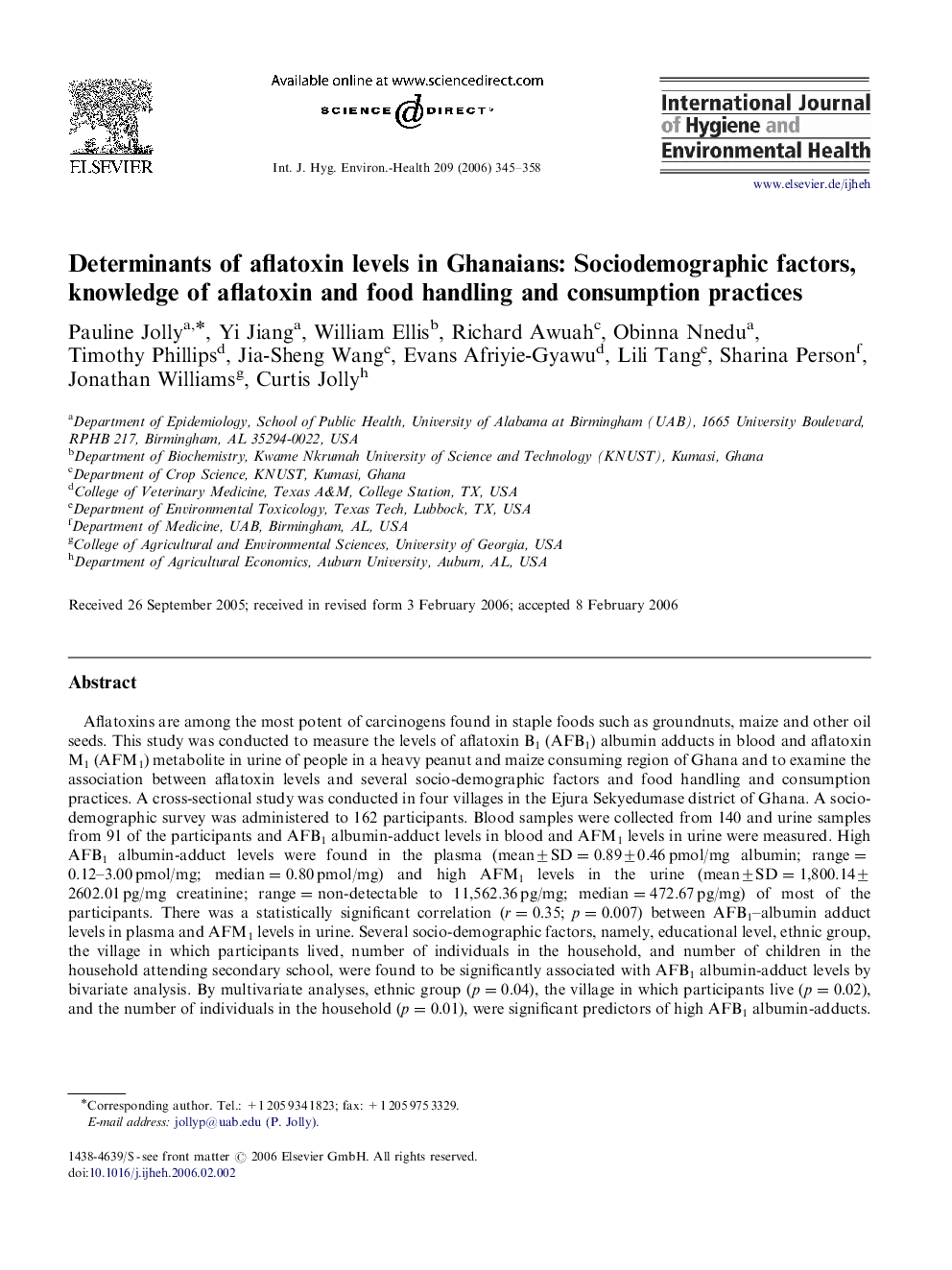| کد مقاله | کد نشریه | سال انتشار | مقاله انگلیسی | نسخه تمام متن |
|---|---|---|---|---|
| 2589346 | 1561940 | 2006 | 14 صفحه PDF | دانلود رایگان |

Aflatoxins are among the most potent of carcinogens found in staple foods such as groundnuts, maize and other oil seeds. This study was conducted to measure the levels of aflatoxin B1 (AFB1) albumin adducts in blood and aflatoxin M1 (AFM1) metabolite in urine of people in a heavy peanut and maize consuming region of Ghana and to examine the association between aflatoxin levels and several socio-demographic factors and food handling and consumption practices. A cross-sectional study was conducted in four villages in the Ejura Sekyedumase district of Ghana. A socio-demographic survey was administered to 162 participants. Blood samples were collected from 140 and urine samples from 91 of the participants and AFB1 albumin-adduct levels in blood and AFM1 levels in urine were measured. High AFB1 albumin-adduct levels were found in the plasma (mean±SD=0.89±0.46 pmol/mg albumin; range=0.12–3.00 pmol/mg; median=0.80 pmol/mg) and high AFM1 levels in the urine (mean±SD=1,800.14±2602.01 pg/mg creatinine; range=non-detectable to 11,562.36 pg/mg; median=472.67 pg/mg) of most of the participants. There was a statistically significant correlation (r=0.35r=0.35; p=0.007p=0.007) between AFB1–albumin adduct levels in plasma and AFM1 levels in urine. Several socio-demographic factors, namely, educational level, ethnic group, the village in which participants lived, number of individuals in the household, and number of children in the household attending secondary school, were found to be significantly associated with AFB1 albumin-adduct levels by bivariate analysis. By multivariate analyses, ethnic group (p=0.04p=0.04), the village in which participants live (p=0.02p=0.02), and the number of individuals in the household (p=0.01p=0.01), were significant predictors of high AFB1 albumin-adducts. These findings indicate strongly that there is need for specifically targeted post-harvest and food handling and preparation interventions designed to reduce aflatoxin exposure among the different ethnic groups in this region of Ghana.
Journal: International Journal of Hygiene and Environmental Health - Volume 209, Issue 4, 19 July 2006, Pages 345–358